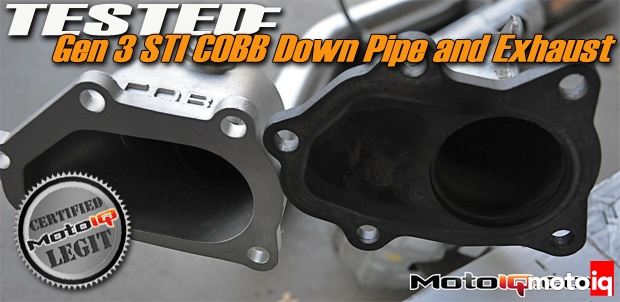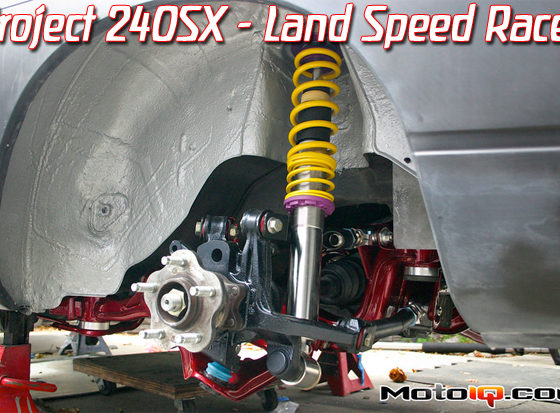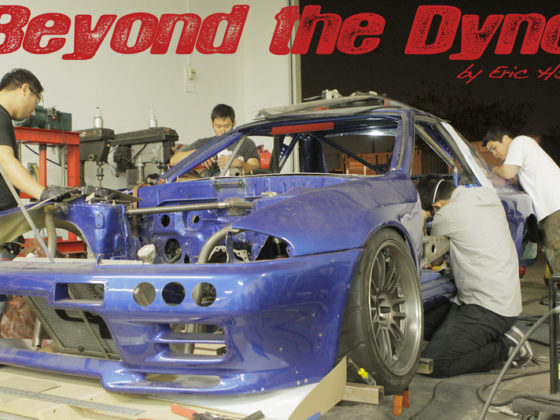 |
Project Gen 3STi:
Testing the COBB Down Pipe and Exhaust
By Wes Dumalski
When last we left off we were singing the praises of AMS and the Cobb AccessPORT, what we left out was the fact that on the way home from AMS we were already making phone calls for more go fast parts. Yes, I had been in the car for all of 10 minutes enjoying the new found power only to realize that more power was just a phone call away. HMM what should we do next? Easy, free up horsepower through less exhaust restriction. The call was to Cobb and it was to discuss the downpipe in particular. I honestly had no plans to replace the stock exhaust as I am a stick in the mud when it comes to loud street cars and quite frankly every Boxer engine with a fart can sounds like Project 200SX with a blown head gasket… (No really they do).
Truth be told we had already researched downpipe replacements and after serious consideration we chose the Cobb. There are a lot of good options out there from just as many companies but what sold us on the Cobb piece was the design and material choices. Many of the available downpipes are tubular in design using stainless tubing for the turbine discharge and wastegate pipes; and while they work quite well in making power, we wanted something that offered superior durability.
 |
| Cobb compared to stock. In addition to the better flowing bellmouth you can also see the bends are more gradual as well as the OEM style exhaust flange interface. This not only helps prevent boost creep but also allows the COBB downpipe to interface with ANY exhaust that works with the factory downpipe. |
We chose the Cobb piece because they use an investment cast stainless steel bellmouth. This CAD designed feature serves to merge the wastegate and turbine discharge smoothly in to the 3″ 304 stainless downpipe. Investment casting is one of the oldest forms of metal forming yet it still remains a staple in the design and fabrication world due to it's ability to produce complex parts with great dimensional accuracy.
 |
| Here you can see the very smooth surface as well as the lack of post machining marks. Investment casting is the best process to use for parts like this. Also notice the smooth transition to the 3″ piping section. |
The process uses a wax mold that gets repeatedly dipped in to the chosen refractory material and coated with course ceramic particles. The mold is then hardened and heated to melt the wax out of the mold cavity. The result is a mold that can perfectly reproduce the original part with great precision and minimal post casting machine work. It also works well in this application because it leaves no parting lines like a mutli-piece mold would. After the chosen molten material is poured in to the mold and given time to cool the mold is then removed. There are several removal methods but all of them involve destroying the mold. Thus to make a large production run you must continually make new molds, hence the term investment. Because of this investment casting is more costly than other casting methods yet is necessary to produce intricate designs like the Cobb bellmouth section of the down pipe.
 |
| Cast in 304 stainless steel this design offers superior durability to stainless tubing and in our opinion is necessary for a car that will see extensive track time. In addition it offers superior corrosion resistance which works well for a dual purpose car. Also incorporated in to the bellmouth is an O2 sensor bung for your wideband sensor. |



